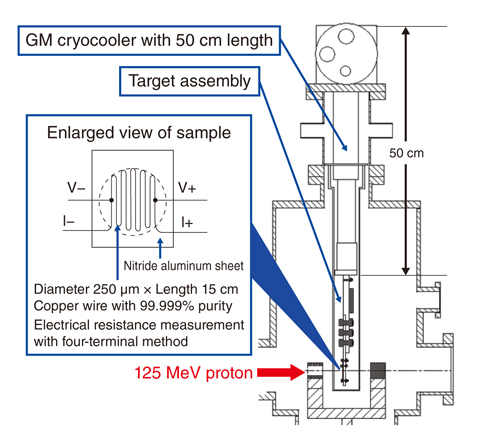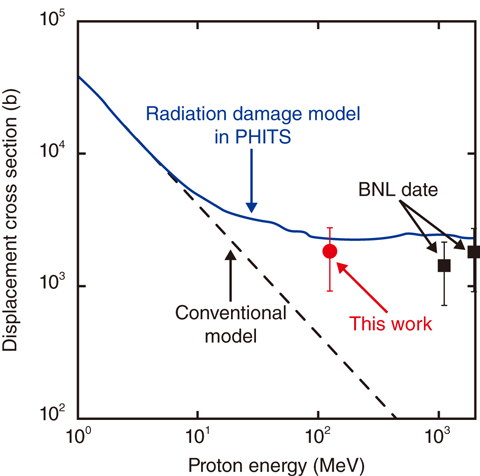
Fig.4-17 Cryogenic irradiation device developed by this research

Fig.4-18 Displacement cross-section of copper owing to proton energy
Displacement per atom (DPA), which is defined as the ratio of the number of displaced atoms to the total number of atoms in an irradiation area, is used as an index for evaluating radiation damage to constructional materials in accelerators. The DPA value is proportional to the displacement cross-section, which shows the probability of displacement, and it is an index of the lifetime of the structural materials. Therefore, accurate prediction of DPA value assists in planning the frequencies of exchanging devices. To improve the accuracy of the predicted displacement cross-section at energies above a few MeV, we have developed a radiation-damage model in the Particle and Heavy Ion Transport-code System (PHITS) that includes nuclear reactions that are not considered in the conventional model.
Validating the displacement cross-section using experimental data is important. For this purpose, we measured the increase in the electrical resistivity of metal induced by defects displaced atoms and vacancies) in the sample under irradiation. Here, it is necessary to set the sample under a cryogenic environment so as not to improve defects. During the only experiment on this subject performed at the Brookhaven National Laboratory (BNL) in the United States, the sample was cooled by liquid helium. However, many facilities cannot use this coolant owing to safety concerns. Therefore, we have developed a cryogenic irradiation device using a movable Gifford-McMahon (GM) cryocooler, which does not use a cryocoolant (Fig.4-17); rather, this device cools samples via a target assembly that includes copper and aluminum plates with high thermal conductivities attached with a GM cryocooler, which has a length of approximately 50 cm and a cooling ability of 4 K (Fig.4-18). We have successfully measured very small electrical-resistivity increases in the copper sample irradiated by protons with energies of 125 MeV at the FFAG accelerator facility at the Kyoto University Reactor Research Institute, and we have deduced the displacement cross-section using this measured value. Using new experimental data obtained by this research, as well as BNL data, we found that our radiation-damage model for the PHITS code can reproduce experimental data very well compared with the conventional model.
From this research, we have established a cryogenic irradiation device for measurement of the displacement cross-section available in various accelerator facilities, and it is possible to validate the radiation-damage model against various types of radiations with wide energy ranges. The experimental data are also used in coordinated research activities of the International Atomic Energy Agency (IAEA) related to the displacement cross-section.